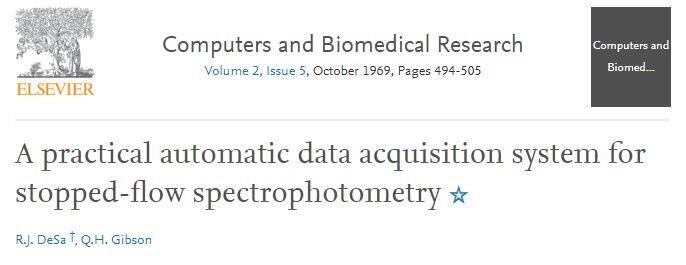The 6-Minute Rule for Uv/vis/nir

Branch of spectroscopy Table-top spectrophotometer Beckman IR-1 Spectrophotometer, ca. 1941 Beckman Design DB Spectrophotometer (a double beam model), 1960 Hand-held spectrophotometer utilized in graphic industry Spectrophotometry is a branch of electromagnetic spectroscopy interested in the quantitative measurement of the reflection or transmission homes of a product as a function of wavelength.
Although spectrophotometry is most commonly applied to ultraviolet, noticeable, and infrared radiation, modern-day spectrophotometers can interrogate large swaths of the electro-magnetic spectrum, including x-ray, ultraviolet, visible, infrared, and/or microwave wavelengths. Spectrophotometry is a tool that hinges on the quantitative analysis of particles depending on just how much light is taken in by colored substances.
The 6-Minute Rule for Circular Dichroism
A spectrophotometer is commonly used for the measurement of transmittance or reflectance of services, transparent or opaque solids, such as refined glass, or gases. Lots of biochemicals are colored, as in, they take in visible light and therefore can be determined by colorimetric procedures, even colorless biochemicals can typically be converted to colored compounds ideal for chromogenic color-forming reactions to yield compounds appropriate for colorimetric analysis.: 65 Nevertheless, they can also be created to determine the diffusivity on any of the listed light ranges that typically cover around 2002500 nm using different controls and calibrations.
An example of an experiment in which spectrophotometry is used is the decision of the balance constant of a solution. A certain chain reaction within a service might occur in a forward and reverse instructions, where reactants form items and products break down into reactants. At some time, this chain reaction will reach a point of balance called a balance point.
Everything about Uv/vis
The amount of light that goes through the solution is a sign of the concentration of specific chemicals that do not permit light to travel through. The absorption of light is due to the interaction of light with the electronic and vibrational modes of particles. Each type of particle has a private set of energy levels associated with the makeup of its chemical bonds and nuclei and therefore will absorb light of particular wavelengths, or energies, leading to distinct spectral residential or commercial properties.
Making use of spectrophotometers covers various scientific fields, such as physics, materials science, chemistry, biochemistry. spectrophotometers, chemical engineering, and molecular biology. They are commonly used in lots of industries including semiconductors, laser and optical manufacturing, printing and forensic assessment, in addition to in labs for the study of chemical compounds. Spectrophotometry is often used in measurements of enzyme activities, decisions of protein concentrations, decisions of enzymatic kinetic constants, and measurements of ligand binding reactions.: 65 Eventually, a spectrophotometer is able to identify, depending upon the control or calibration, what compounds exist in a target and precisely how much through estimations of observed wavelengths.
Created by Arnold O. Beckman in 1940 [], the spectrophotometer was developed with the help of his associates at his business National Technical Laboratories founded in 1935 which would become Beckman Instrument Company and eventually Beckman Coulter. This would come as a solution to the formerly created spectrophotometers which were unable to soak up the ultraviolet properly.
The 2-Minute Rule for Uv/vis
It would be found that this did not provide acceptable results, for that reason in Model B, there was a shift from a glass to a quartz prism which enabled much better you could look here absorbance outcomes - circular dichroism (https://dribbble.com/olisclarity1/about). From there, Model C was born with an adjustment to the wavelength resolution which ended up having 3 systems of it produced
It irradiates the sample with polychromatic light which the sample absorbs depending upon its residential or commercial properties. It is transmitted back by grating the photodiode selection which discovers the wavelength region of the spectrum. Ever since, the creation and execution of spectrophotometry devices has actually increased profoundly and has ended up being one of the most innovative instruments of our time.

The Ultimate Guide To Uv/vis/nir
The grating can either be movable or fixed.
In such systems, the grating is fixed and the strength of each wavelength of light is determined by a different detector in the array. When making transmission measurements, the spectrophotometer quantitatively compares the fraction of light that passes through a referral option and a test service, then electronically compares the intensities of the 2 signals and computes the portion of transmission of the sample compared to the referral standard.
Comments on “Uv/vis/nir for Dummies”